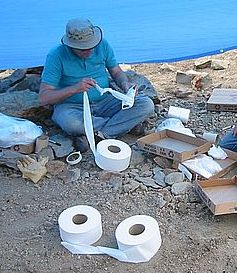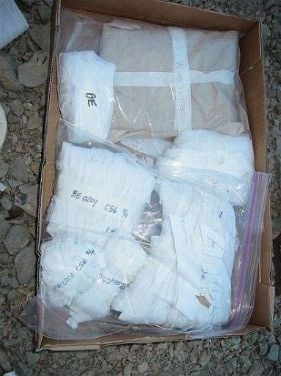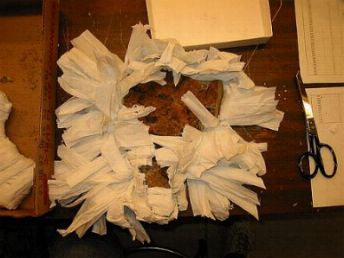

All fossils require special care and handling. However the specimens from Castle Rock are found in especially moist rock called 'mudstone'. (Harder than mud, but softer than most sedimentary rock. The mudstone is so wet that special steps are required to slow the drying process. Without these steps, many fossils would be completely destroyed and unrecognizable. Have you ever seen the bottom of a dried up lake? Below are the steps we take to slow the drying process. After viewing this page, you can find an experiment conducted to demonstrate the rapid deterioration of a fossil when the drying process isn't followed - see 'Deterioration Experiment'.


Step 1: Immediately wrap fossils in protective layer of toilet paper or paper towels. This protects the fossil in transport, but also helps wick away the moisture from the fossil surface. Without this, the water would pool up and damage the specimen.
Step 2: Seal wrapped fossils in plastic bags to keep them from being exposed to Colorado's extremely dry air. Inside the bags, the fossils are safe in a humid environment which slows the drying time greatly.Step 3: Transport the fossils to the museum's controlled environment and later open the plastic bags slightly. The mudstone continues drying, but at a slow pace.
Step 4: Remove the wrapped fossils from the plastic bags, yet still keep them in the cardboard boxes (beer flats).
Step 5: Finally, after 5 to 6 weeks, the toilet paper wrap is removed from the fossils. Each fossil is placed in an acid-free specimen box with its quarry number and specimen number and stored again in two cardboard flats. Then, the drying process is complete and the specimens are ready for preparation in the Lab.

When these steps are not followed, the result can be complete destruction of the fossils. See 'Deterioration Experiment'.
Hosting donated by Wagner Database Solutions, Inc. |